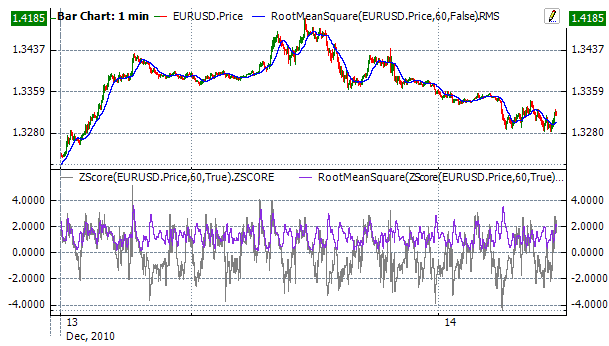Root Mean Square |
The root mean square (RootMeanSquare) (RMS) is defined as the square root of the mean square (the arithmetic mean of the squares of a set of numbers). The RMS is also known as the quadratic mean and is a particular case of the generalized mean with exponent 2. On the price charts it usually acts very similar to simple moving average indicator. But it can be very useful in case of charts with positive and negative values (e.g. z-score values).
In the case of a set of N values  , the RMS is
, the RMS is
 .
.
If  is the arithmetic mean and
is the arithmetic mean and
 is the standard deviation of a population then:
is the standard deviation of a population then:


To initialize root mean square indicator, use one of the following constructors:
RootMeanSquare – set default values: period = 14
RootMeanSquare(Int32) – set value for period
RootMeanSquare(TimeSpan) – sets time period
Use
RMS - property to get current value
1// Create new instance 2var indicator = new RootMeanSquare(28); 3 4// Number of stored values 5indicator.HistoryCapacity = 2; 6 7// Add new data point 8indicator.Add(CurrentPrice); 9 10// Get indicator value 11double IndicatorValue = indicator.RMS; 12// Get previous value 13if (indicator.HistoryCount == 2) 14{ 15 double IndicatorPrevValue = indicator[1]; 16}